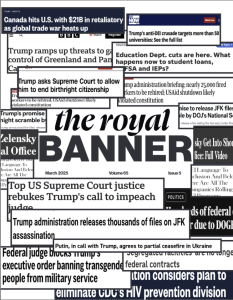A Change in the Matrix
October 24, 2022
A decade ago, the rising conveniences of the internet became a necessity in the modern school system, as schools found themselves needing to utilize it more and more by the day. Enter the Fairview website, student-run and complete with a slick and decorative new interface. Its modern ingenuity made it convenient and easy for teachers to share their class information and schedule, counselors to post information on scholarship opportunities, and clubs to convey meeting times and locations, and it was all available to any student who needed access. Of course, such freedom can bring up serious issues. Due to requirements and regulations outside even of BVSD’s control, the Fairview website is changing domains for the first time since its inception 20+ years ago.
“We understand why they’re moving to a district-level website.” said senior Pranav Kadekodi, one of the co-leaders of the Fairview web team. “We’re just disheartened because it’s something we’ve worked on so long.“
Saying that the website has been worked on for ‘so long’ feels like an understatement when looking at its full history. The website was upgraded to its current iteration in 2011 and has had a lot of updates due to web teams over the years making their own changes. However, the web team doesn’t have complete jurisdiction over the website.
“Mr. Osborne at our school, he’s kind of the webmaster, he’s been telling us if there’s anything BVSD needs for us to do and has been meeting with us from time to time for that…” said Kadekodi. “…In the past, before the major migration, I don’t believe they asked us for anything really major, just like some slight tweaks here and there.”
“As a school we have to reorient ourselves in how to manage the new district website standards,” said teacher John Osbourne. “I’ll give you a specific example… We have 20 years of experience at Fairview of volunteers running our website, and we have hundreds of volunteers that each have their own little niche page that they manage.”
These volunteers significantly contributed to the depth of information available. As a result, the website was incredibly expansive and comprehensive. Each sports team had its own page, with frequent updates on upcoming events and fundraisers, something that a small group of collaborators would have no chance to maintain on their own. However, having such a large quantity of volunteers also meant there was a large number of logins and other various ways to access this information. For a school website, this is quite dangerous.
“People that were not students or employees had access to our old website as volunteers to keep things up to date, which [was] a very high security risk because we are giving them access to the school’s official website and they could cause harm to the public face of the school,” said Osbourne. “So now we as a school have to reorient it.”
Security on a school website is vastly important, because if somebody with malicious intent got their hands on key information, it would create serious repercussions for that school.
“It’s always kind of a little bit of a struggle,” said BVSD’s chief of communication Randy Barber. “[Hackers are] always finding new ways to find their way in and reach your system, which can be problematic, both in terms of your ability to have a website that has the information that you want, but also, as you can imagine, student info and staff info and all that kind of stuff is crucial as well.”
Despite these concerns, the web team feels confident in their security system.
“There’s a lot of security in place,” said Kadekodi. “For example, even if somehow they got our login credentials, they wouldn’t be able to see the passwords of all the students who’ve logged in to the website because those are encrypted and scrambled into what’s called a hash. So like, I can’t see the passwords of the people who enter their information in and whatnot. And also like the servers and stuff, those are being hosted by Cloudflare. They have a very good security system. So I don’t believe it’s really a risk.”
“Almost every major website, Fortune 500 companies do simple plugs. They’re all protected by Cloudflare.” said senior Michael Brennan, another co-leader of the web team. “It’s a very secure platform… It’s not like everybody just has free-for-all access. We gate it, you know, some people only have access to counseling, some people are only going to have access to the club page, etc.”
However, security problems alone aren’t behind the entire problem.
“[Changing the website] wasn’t so much for the security side of things, although I would say we did have a couple of cases,” said Barber. “The biggest reason for it was something called the Office of Civil Rights. They’re the ones that oversee making sure that school districts abide by the civil rights laws. And one of those things is about accessibility of websites.”
The Office of Civil Rights is part of the U.S. Department of Health and Human Services, working to protect/enforce civil rights cases of unlawful discriminations. This can come in various forms, such as the Age Discrimination Act of 1975, or the Civil Rights Act of 1964. The Rehabilitation Act of 1973, specifically Section 508 of it, is the main law that pertains to this scenario. ,. Section 508 states that individuals with disabilities have the right to be able to access as many informational and online resources as those without disabilities, and the Office of Civil Rights enforces those regulations when it comes across any issues.
“My understanding is that there was one person that was going after school districts and filing these, what we call OCR complaints, and making a big deal about the accessibility of those websites,” said Barber. “They did an audit of all of our websites and came across a pretty long list of things that we needed to work on. Some of it was like the color of the button and/or the text. It was in a way that somebody that has a color deficiency and seeing colors, you know, they couldn’t see that color green very well. There wasn’t enough contrast with the way that certain tools worked. As we’re fixing these things, we had actually gone to a new tool, it’s been about three years now, [called] Finalsite, which is a company.”
Finalsite is a web building software dedicated to school website creation. The software is powerful, with various customization features that BVSD can take advantage of. The most useful tool it has though , is a system which allows the developers of a site to follow the latest accessibility guidelines that have come out. BVSD first utilized Finalsite all the way back in January of 2020, and it was only a matter of time before it came to Fairview.
“So we implemented this thing, we rolled it out all to our schools, and there were some like Fairview that had not made that transition yet,” said Barber. “As we went through the OCR complaint, it just became clearer and clearer that, that risk of having a website that’s not even gone through this process, which finalsite is kind of renowned for being pretty aware of… There were a lot of reasons to consider changing the website and to go along with the rest of the school districts, but that one was kind of the hard line of like, ‘we really needed to do this, or else each individual school might face a complaint directly.’ And it’s a pretty big deal.”
We asked the web team about these accessibility issues, and it turned out they hadn’t heard of them before.
“We complied with all of the [BVSD] regulations applying to the website,” said Brennan.
“Yeah, we were not informed that we were breaking any of these regulations,” said Kadekodi. “…In the past, like before the major migration, I don’t believe they asked us for anything really major, just like some slight tweaks here and there.”
“Technically there’s only just one file in the code that just has all the colors,” said Brennan. “[Fixing] it would be as simple as just putting a little check to see ‘does somebody want to have the colorblind mode or specific mode’? And we would just change those colors. It would be extraordinarily easy.”
There’s logical arguments to be made for both sides, but the decision to move to Finalsite does have one dire consequence.
“BVSD has control… if they stop paying for the servers or domains or anything, it [the website] would just shut down. They have full control over that,” said Brennan.
“There isn’t really a guarantee that the website will continue past this year,” said senior Austin Campbell, the other co-leader of the web team.
If the original Fairview website shuts down, then 20+ years of history will disappear. Since Finalsite is managed at a district level, it’s unlikely that students will need to be involved in the school website anymore. This is to the dismay of everybody involved, even those at the BVSD level.
“I do hope that students will be using it,” said Barber. “That’s my point of view from it. I don’t know where Fairview will land, but you know, I think that students that are at the high school level being a part of this is really, really crucial… Great kudos to the students that have been managing this and I think any time that you get a chance to be able to be involved in the technology, and it’s something that’s as upfront and visual as a website for your school, I think that’s really great. Again, our hope to a certain extent is that we can find ways that students can utilize the tools that we’ve got and still do journalistic work or whatever might flow. There might be a little less in terms of coding and that kind of thing, but ultimately there’s a benefit there.”
“As more and more of the functionality of our website gets transferred or turned off in favor of the newer one, the counseling page will definitely become much more integral to what the club is doing,” said Campbell. “And we’ll continue to rely on the club, at least for this year.”















